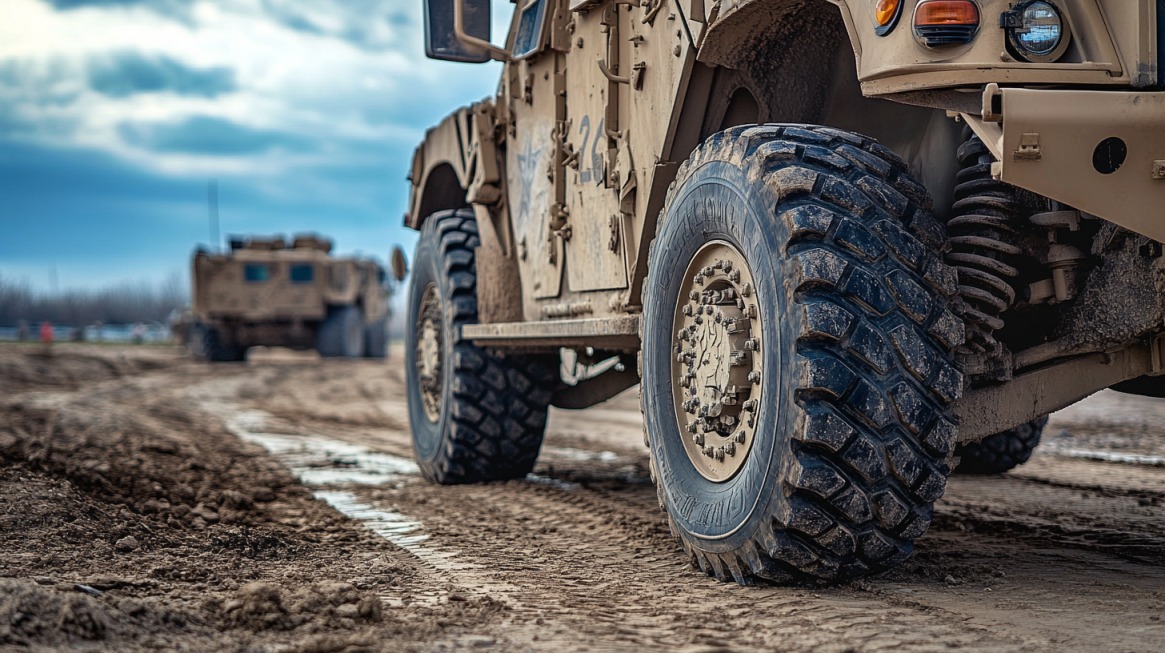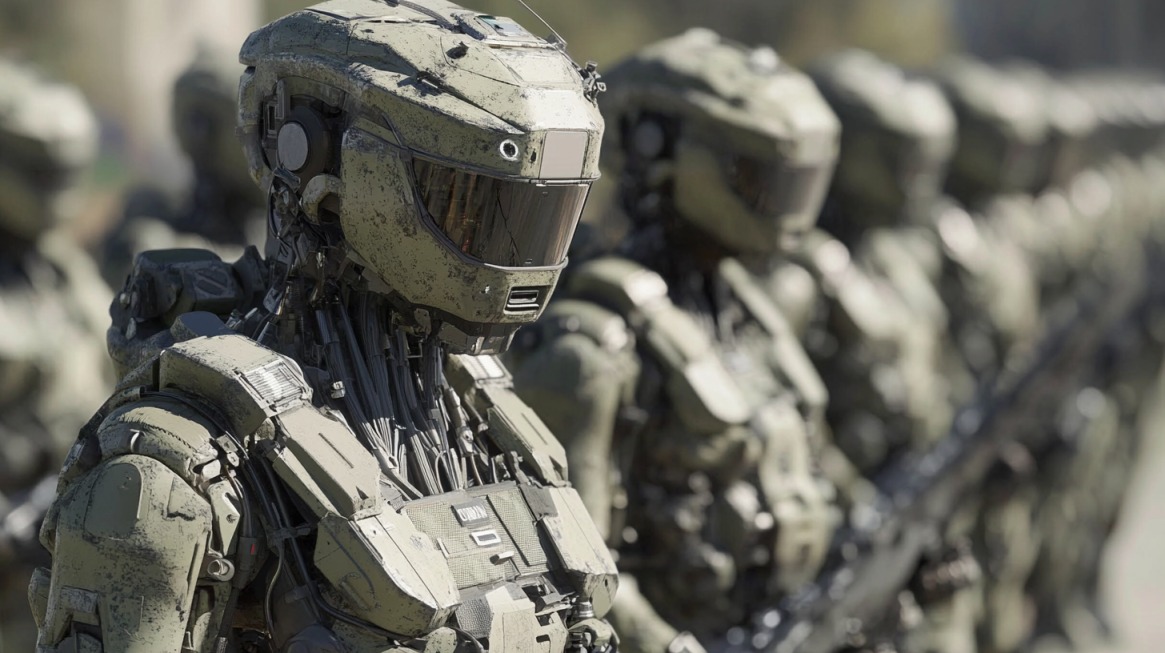Autonomous military machines are transforming combat strategies in ways previously reserved for science fiction. Integrating artificial intelligence, robotics, and self-governing systems, they now operate in air, land, and sea environments without human direction.
As military forces seek faster, more efficient, and less risky operations, automation has become an undeniable force.
Machines with autonomous capabilities are no longer experimental concepts. They’re active players in global defense strategies, impacting missions, logistics, and geopolitical influence.
Let us talk about autonomous military machines in greater detail.
Key Technologies & Systems
| Category | Primary Functions | Key Technologies | Tactical Advantages | Examples |
|---|---|---|---|---|
| Unmanned Aerial Vehicles (UAVs) | Air combat, surveillance, target tracking | Swarm AI, BVLOS, eSIM, nano drones | Long-range ops, stealth, no human control needed | Predator, Reaper, nano drones |
| Unmanned Ground Vehicles (UGVs) | Combat support, logistics, patrol, EOD tasks | Terrain sensors, modular payloads, autonomous navigation | Versatility, survivability, remote or self-guided movement | THeMIS, Talon Swords |
| Autonomous Weapon Systems (AWS) | Target acquisition and engagement without human input | AI vision, signal intelligence, biometric threat detection | Speed, precision, integration with larger networks | US, China, Russia systems |
| Humanoid & Biomimetic Robots | Surveillance, payload transport, recon in confined areas | Lifelike movement, miniaturization, modular attachments | Stealth, adaptability, maneuverability in complex environments | Spot, hummingbird drones, snake bots |
Autonomous military machines rely on a rapidly advancing mix of robotics, AI, and smart connectivity.
These systems have evolved into distinct categories, each bringing specialized capabilities to the battlefield.
Unmanned Aerial Vehicles (UAVs)
Airborne drones have transformed air combat and reconnaissance. What began with Predator and Reaper drones now includes coordinated swarms, each operating with decentralized decision-making. Modern UAVs carry lethal payloads or high-tech surveillance gear and often fly without line-of-sight oversight.
Equipped with BVLOS (Beyond Visual Line of Sight) tech and eSIM connectivity, they function across continents with low latency and high reliability.
Many UAVs operate in coordinated formations that resemble insect swarms. These systems use distributed intelligence, responding to battlefield conditions in real time.
Nano drones, often the size of birds or insects, offer stealth and precision in urban and confined areas.
- Swarm functionality for group-based decision-making and execution
- BVLOS systems allowing long-range missions with remote operators
- eSIM technology for secure, global data exchange
- Miniaturization enabling deployment of nano drones in tight or indoor environments
- Autonomous target tracking without requiring direct human input
Unmanned Ground Vehicles (UGVs)

Ground-based autonomous machines handle a variety of combat and logistical tasks. Reconnaissance units, weaponized platforms, and cargo haulers all fall under this category.
THeMIS by Milrem Robotics, for example, can serve as a mobile gun platform or transport injured personnel.
Talon Swords by QinetiQ can disarm explosives, conduct patrols, or assist infantry.
These vehicles move through rough terrain, assess obstacles, and navigate without continuous input. Many are modular, allowing custom payloads or attachments for different mission types.
- Terrain adaptation using onboard sensors and pathfinding algorithms
- Combat or logistical configurations depending on mission demands
- Remote or autonomous operation with various levels of human oversight
- Payload versatility for weapons, tools, or supplies
- Survivability enhancements like armor plating and self-righting capabilities
Autonomous Weapon Systems (AWS)
These machines provoke intense debate. They engage targets without needing a human in the loop, using pre-programmed parameters and AI analysis to act.
While controversial, development continues in countries like the United States, China, and Russia.
Systems range from stationary sentries to mobile strike platforms. Algorithms identify enemy combatants based on biometric or behavioral data, then deliver lethal force automatically. AWS may operate solo or integrate with larger systems, feeding data to human command centers.
- Target acquisition and engagement without human input
- Real-time threat assessment using AI vision and signal intelligence
- Integration with larger battle networks for force multiplication
- Scalability to operate in isolation or as part of swarms
- Speed of action far exceeding human reaction times
Humanoid & Biomimetic Robots

Inspired by animal and human physiology, biomimetic systems extend the reach of modern militaries into areas inaccessible to traditional hardware.
Boston Dynamics’ Spot resembles a four-legged creature capable of walking, climbing, and carrying payloads through rough terrain.
Insect-sized hummingbird drones enter buildings or tight quarters for surveillance, while snake-like robots coil through pipes or rubble for search-and-rescue or intelligence gathering.
These machines blur the line between form and function. Their lifelike movement patterns offer stealth, flexibility, and operational success in unpredictable environments.
- Navigation of tight or hazardous spaces like collapsed buildings or narrow pipelines
- Human-like gait or movement for navigating stairs, rubble, or slopes
- Payload delivery in high-risk or hard-to-reach zones
- Surveillance with minimal detection risk due to small size and quiet movement
- Potential weaponization or tool usage via modular appendages
Strategic & Operational Advantages
Autonomous systems carry out missions with speed and accuracy far superior to human capabilities. Fast execution often determines success in modern combat, and machines excel by eliminating hesitation, fatigue, and emotional variables.
Removing personnel from immediate danger zones drastically lowers casualties while enabling continuous 24/7 operations, regardless of terrain or threat level.
Artificial intelligence allows these machines to process sensor input, environmental changes, and mission parameters in real time.
Reactions aren’t delayed by human decision chains or communication lags. Instead, onboard systems adjust routes, tactics, and targeting in seconds.
That edge becomes decisive in engagements where milliseconds separate survival from disaster.
- Instant reaction to threats or changes in mission objectives without delay
- Reduced collateral damage due to enhanced vision systems and decision logic
- Machines modify behavior without needing remote instructions
- Machines don’t require sleep, food, or rotation like human forces
Data analytics integrated into combat systems boost battlefield awareness. Drones, UGVs, and sensor-embedded platforms transmit encrypted data to command hubs.
That information arrives pre-processed, giving military leadership immediate situational intelligence. Instead of interpreting raw data, commanders receive actionable summaries—resulting in faster, smarter decisions.
- No need for extensive human support infrastructure
- Reduced long-term expenses compared to human deployment
- Can function in environments that are too dangerous or toxic for humans
- Easier to deploy en masse or customize for mission-specific roles
Flexibility in deployment strategy gives military forces significant control. Units can be tailored for reconnaissance, supply transport, or direct engagement.
Global Adoption & Military Doctrine
Global militaries are escalating investment in autonomous systems to stay competitive in a fast-changing threat environment. Automation has become essential to national defense strategies, with leading powers embracing rapid innovation while others scramble to catch up.
The United States, through the Replicator Initiative, has prioritized mass production of inexpensive, expendable autonomous drones.
In contrast, the United Kingdom faces criticism for outdated systems and a slower embrace of automation, exposing vulnerabilities in strategic planning and operational readiness.
Geopolitical flashpoints such as Ukraine, Taiwan, and the Middle East are no longer theoretical test cases—they are proving grounds. Multipolar threats have driven NATO members and Asian powers to reevaluate traditional doctrines. Speed and flexibility have become non-negotiable in modern combat scenarios.
Software-first thinking dominates today’s military planning. Algorithms are treated with equal importance to airframes, missiles, or armor. Nations now engineer warfare around code, not just steel. Machine learning platforms detect and classify threats faster than human analysts. Automated logistics optimize resupply and reinforcement in real time.
With emerging technologies and latest developments in AI, regulating lethal autonomous weapons systems is becoming crucial. @MelanieRegimbal, Chief of @ODA_Geneva, discusses how States and the UN can respond to this challenge.https://t.co/qZcPDiYojE pic.twitter.com/TO90lbojwL
— United Nations Geneva (@UNGeneva) June 9, 2023
- Ukraine: Use of commercial and military drones has reshaped battlefield intelligence and artillery accuracy.
- Taiwan Strait: Arms races emphasize remote-controlled and autonomous systems as China increases military pressure.
- Middle East: Autonomous weapons deployed by state and non-state actors in asymmetrical warfare.
Automation offers fast responses, data-driven adjustments, and minimal reliance on human intervention in high-stakes situations. Military leaders now view machines not as support assets, but as essential warfighters in future conflicts. The speed of adoption will likely define military dominance in the coming decades.
The Bottom Line
Machines that operate on their own bring undeniable tactical benefits and raise complex ethical dilemmas. Efficiency, speed, and risk reduction come at the cost of human oversight and moral responsibility.
Without international cooperation and enforceable regulations, autonomous military machines could destabilize already volatile regions. Defining clear lines on their use may prove as important as their technological development.
Society must ask a fundamental question: Should autonomous military machines be allowed to make decisions that end human lives?
Related Posts:
- The Rise of Ruggedized Displays - How ViewPoint…
- A Look at US Military Helicopters: Past, Present, and Future
- How to Structure a 12-Week Military Running Program…
- What Benefits Do You Get After 4 Years of Military Service
- How Old Can a Woman be to Join the Military? Joining…
- What Criminal Charges Can Disqualify You from…







